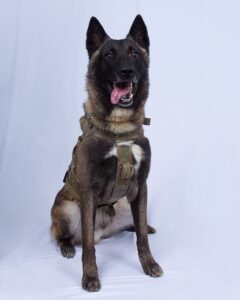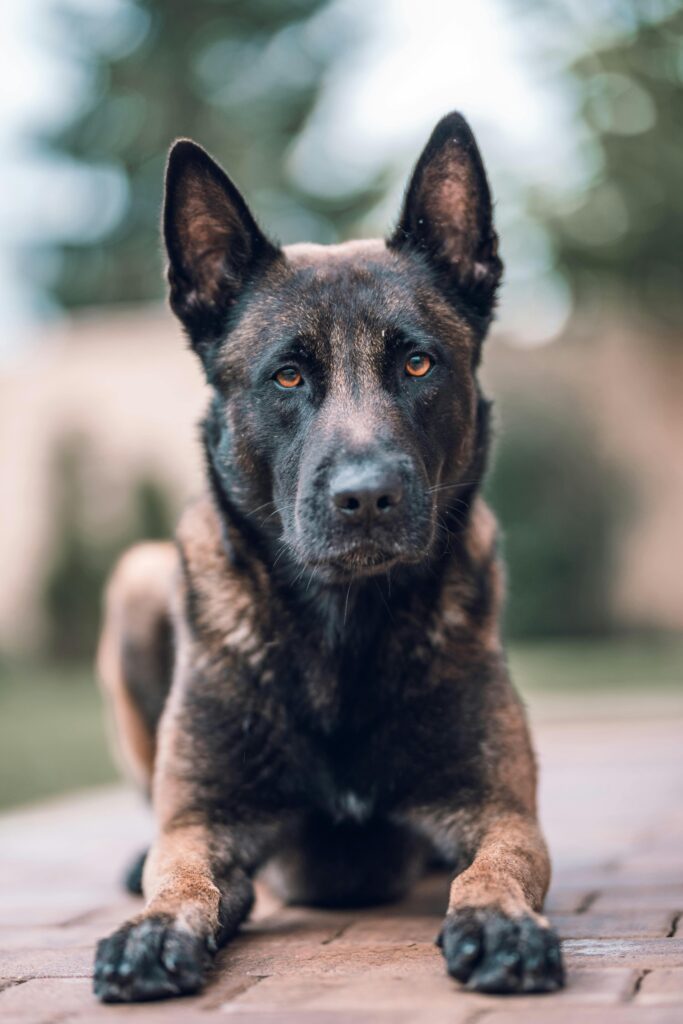TuffK9.com
For people who love their working dogs!
The Belgian Malinois is a breed celebrated for its intelligence, agility, and unwavering dedication. Originally bred as a herding dog in Belgium, the Malinois has become a global icon in working roles, particularly as Malinois protection dogs in police and military settings. This article explores the fascinating history of the Belgian Malinois, the training that shapes their exceptional abilities, and their critical contributions to law enforcement and defense operations.
Introduction to the Belgian Malinois
The Belgian Malinois—often simply called the Malinois—is one of four varieties of Belgian shepherd dogs, known for its short, fawn-colored coat and distinctive black mask. These dogs are more than just companions; they are highly skilled professionals trusted by police forces, military units, and families worldwide. With a reputation for versatility and loyalty, this breed excels in roles ranging from personal security to detecting explosives and apprehending suspects. Malinois are well known for their great agility and amazing athletic ability
In this post, we’ll dive into the breed’s origins, their unique training requirements, and why they’ve become the go-to choice for protection work. Whether you’re a dog enthusiast or considering a Malinois for your own protection needs, this guide offers a comprehensive look at this remarkable breed.
History of the Belgian Malinois
The story of the Belgian Malinois begins in the late 19th century in Malines, Belgium, from which the breed takes its name. Developed by breeders seeking a capable herding dog, the Malinois emerged as a distinct variety of Belgian shepherd around 1891. Their intelligence, strength, and trainability quickly caught the attention of more than just farmers.
By the early 20th century, Belgian police began employing the Malinois for patrol and guard duties. During World War I, these dogs served heroically as messengers, ambulance assistants, and even pulled supply carts on the battlefield. Their role expanded further in World War II, cementing their status as invaluable working dogs. Post-war, the breed’s popularity spread to the United States and beyond, where they were embraced for their potential in law enforcement and military applications.
Today, the Malinois is synonymous with excellence in protection and service roles. Their evolution from herding livestock to safeguarding lives showcases their adaptability and the careful breeding that has preserved their working instincts.
Characteristics and Temperament of the Malinois
The Belgian Malinois is a medium-to-large breed, typically weighing 40–80 pounds and standing 22–26 inches tall. Their athletic build, marked by a lean, muscular frame, is designed for speed and endurance. Their short coat requires minimal grooming, and their alert, expressive face reflects their sharp mind.
What truly defines the Malinois is its temperament:
- Intelligent: They grasp commands quickly and excel in complex tasks.
- Loyal: They form deep bonds with their handlers, making them fiercely protective.
- Energetic: They thrive on activity and require regular physical and mental challenges.
- Confident: Their awareness and poise make them natural watchdogs.
These qualities make the Belgian Malinois a standout choice for protection work. However, their intensity and drive mean they’re best suited for active homes or professional environments where their skills can be fully utilized.
Training the Belgian Malinois
Training a this breed is both a rewarding and demanding endeavor. Their eagerness to learn is matched by a need for consistent, engaging guidance. Without it, their energy can lead to boredom or destructive behavior.
General Training Tips
- Start Young: Begin socialization and basic obedience at 8 weeks to build a strong foundation.
- Positive Reinforcement: Use treats, praise, and play to motivate this reward-driven breed.
- Mental Stimulation: Incorporate puzzles, scent games, or agility drills to keep them sharp.
- Daily Exercise: A tired Malinois is a happy Malinois—aim for at least an hour of activity daily.
Training Malinois Protection Dogs
For protection work, the Belgian Malinois is a natural fit, but this specialized training should be left to professionals. It harnesses their instincts while ensuring control and safety. Key elements include:
- Bite Work: Teaching the dog to apprehend on command with precision.
- Obedience in Chaos: Ensuring they respond instantly, even under stress.
- Detection Skills: Training them to identify narcotics, explosives, or other scents.
- Handler Defense: Conditioning them to protect their handler when needed.
A well-trained Malinois protection dog isn’t aggressive by nature—it’s a disciplined partner that acts only when directed. This balance is what makes them so effective in high-stakes roles.
Belgian Malinois in Police and Military Roles
The Malinois has become a cornerstone of police and military operations worldwide, thanks to their unmatched versatility. They perform a variety of critical tasks:
- Apprehension: Using speed and strength to subdue suspects safely.
- Detection: Sniffing out drugs, bombs, or hidden threats with precision.
- Search and Rescue: Locating survivors in disaster zones or rugged terrain.
- Patrol: Providing a visible deterrent in security-sensitive areas.

A standout example is Conan, the Belgian Malinois who aided U.S. Special Forces in the 2019 raid that eliminated ISIS leader Abu Bakr al-Baghdadi. Conan’s courage highlighted the breed’s pivotal role in modern warfare. In police departments, Malinois are prized for their ability to navigate obstacles, work in confined spaces, and maintain focus amid chaos—skills that often outshine those of other breeds.
Their extensive use in these roles isn’t just a trend; it’s a testament to their reliability and adaptability. From urban streets to battlefields, Malinois are trusted to perform under pressure.
Why Choose a Malinois for Protection?
When selecting a protection dog, the Belgian Malinois offers distinct advantages:
- Trainability: Their quick learning curve allows for advanced skill development.
- Loyalty: Their bond with handlers ensures dependable protection.
- Athleticism: Their physical capabilities enable them to tackle diverse challenges.
- Versatility: They transition seamlessly between protection, detection, and patrol duties.
That said, owning a Malinois protection dog comes with responsibilities. They demand experienced handlers who can provide structure, exercise, and purpose. For personal or family protection, partnering with a reputable trainer is essential to ensure the dog is both effective and safe.
For organizations like police or military units, the Malinois is a cost-effective investment, delivering years of service with proper care. Their combination of brains and brawn makes them a top-tier choice over other breeds.
Conclusion
The Belgian Malinois is a breed of extraordinary talent and dedication. From their roots as herders in Belgium to their modern-day prominence, they have continually proven their worth. Their intelligence, trainability, and courage have made them indispensable in police and military roles, while their loyalty endears them to those they protect.
Whether patrolling city streets, searching disaster zones, or guarding homes, the Malinois embodies the pinnacle of working dogs. For those prepared to meet their needs, they offer unmatched security and companionship. Have thoughts on this incredible breed? Share them in the comments below
For More Info On The Belgian Malinois
Breeders
Finding a reputable breeder is essential for getting a healthy, well-bred Belgian Malinois. Here are some top options:
- American Belgian Malinois Club (ABMC): The official AKC parent club for the breed, the ABMC offers a breeder referral list featuring ethical breeders who prioritize health and temperament.
- Belgian Malinois Rescue: For those open to adoption, this organization connects people with Malinois in need of loving homes, often including puppies and adults.
2. Training Resources
The Belgian Malinois requires consistent training and socialization due to its intelligence and high energy. These resources can help:
- TuffK9.com Training & Resources – A list of valuable resources for all of your training needs
- TuffK9.com Training Products – Be sure to check out our products page for products that are geared to the training of working K9s
- Fenrir Canine Leaders: Offers practical training advice and resources designed for high-energy, smart dogs.
- The Complete Guide to the Belgian Malinois: electing, Training, Socializing, Working, Feeding, and Loving Your New Malinois Puppy
- The Monks of New Skete: Their book, How to Be Your Dog’s Best Friend, is a highly regarded guide for training intelligent, active breeds.
3. Clubs and Organizations
Joining a club can connect you with other Malinois enthusiasts and provide valuable information:
- American Belgian Malinois Club (ABMC): Beyond breeder referrals, the ABMC hosts events and offers educational resources about the breed.
- United Schutzhund Clubs of America (USCA): Ideal for those interested in protection sports, where Malinois often excel.
- North American Ring Sport Association (NARSA): Another great option for fans of protection sports, popular among Malinois owners.
4. Health and Care
Understanding the breed’s health needs is crucial, as Malinois can be prone to issues like hip dysplasia. Check out:
- Orthopedic Foundation for Animals (OFA): Provides health testing data to ensure your Malinois comes from healthy lines.
- Veterinary Partner: Features articles on breed-specific health, nutrition, and care tips.
- PetMed Belgian Malinois Health: A dedicated site with information on common health concerns and preventive care strategies.
5. Online Communities and Websites
For advice, discussions, or general knowledge, these online resources are excellent:
- Malinois Forum: A community forum where owners and enthusiasts share experiences, tips, and questions.
- Reddit’s r/BelgianMalinois: A subreddit for breed-specific discussions, photos, and owner insights.
If you’ve found this information interesting or helpful, or have something to add, please leave a comment below!
Thanks for reading!
Proudly powered by WordPress


